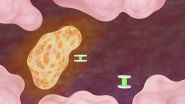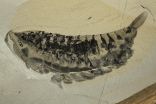Integrative approaches key to understanding cancer, developing therapies, say Moffitt scientists
Commentary in Nature Genetics discusses integrative approach to study cancer heterogeneity
2015-03-27
(Press-News.org) TAMPA, Fla. - Moffitt Cancer Center researchers are using integrative approaches to study cancer by combining mathematical and computational modeling with experimental and clinical data. The use of integrative approaches enables scientists to study and model cancer progression in a manner that conventional experimental systems are unable to do.
Alexander Anderson, Ph.D., chair of the Department of Integrated Mathematical Oncology (IMO) and Mark Robertson-Tessi, an applied research scientist in IMO, recently published a commentary on an integrative approach used to study cancer heterogeneity.
Cancer is a heterogeneous disease, with genetic variations occurring between different types of tumors and different patients. More importantly, heterogeneity also exists among the cells of a single tumor. This heterogeneity makes treating cancer extremely difficult and can also lead to resistance to therapeutic agents.
Anderson and Robertson-Tessi explained that in order to develop better therapeutic approaches, it is important for scientists to identify these variations and how they lead to tumor growth and invasion. They described a new theory called the "Big Bang" model of cancer heterogeneity, developed by researchers from the University of Southern California.
The traditional model of tumor heterogeneity suggests that sequential mutations over time lead to the emergence of fitter cells that continue to grow and take over the tumor - called the clonal selection model. Contrary, the Big Bang model suggests that for some tumors, mutations occur early during development when tumors are smaller. This type of heterogeneity is common in tumors that are not limited by space and have a lot of room to grow and expand, as exemplified by colorectal cancer.
According to the Moffitt scientists, this paradigm shift may have significant implications for treatments for cancer that develop similar to colorectal cancer. Following cancer therapy, the dominant cells may die first, and other cells that were originally not as fit may find themselves better able to compete for necessary space and nutrients and continue to grow and take over the tumor.
"Understanding how heterogeneity changes with treatment is key to controlling the emergence of aggressive and resistant clones following therapy," explained Anderson. However, current therapeutic approaches that treat a tumor until resistance develops ignores the fact that tumors can change during treatment.
The study by the University of Southern California "exemplifies a real opportunity for the oncology community, one that embraces an integrated approach to understanding cancer progression and developing therapies that exploit evolution rather than ignore it," said Anderson. The integrated approaches being developed and used at Moffitt are instrumental for the continued advancement of our understanding of cancer progression and the development of novel cancer therapies.
INFORMATION:
The commentary was published in the February 9 issue of Nature Genetics.
About Moffitt Cancer Center
Located in Tampa, Moffitt is one of only 41 National Cancer Institute-designated Comprehensive Cancer Centers, a distinction that recognizes Moffitt's excellence in research, its contributions to clinical trials, prevention and cancer control. Moffitt is the top-ranked cancer hospital in the Southeast and has been listed in U.S. News & World Report as one of the "Best Hospitals" for cancer care since 1999. With more than 4,500 employees, Moffitt has an economic impact in Florida of nearly $1.6 billion. For more information, visit MOFFITT.org, and follow the Moffitt momentum on Facebook, Twitter and YouTube.
ELSE PRESS RELEASES FROM THIS DATE:
2015-03-27
The promising new material molybdenum disulfide (MoS2) has an inherent issue that's steeped in irony. The material's greatest asset--its monolayer thickness--is also its biggest challenge.
Monolayer MoS2's ultra-thin structure is strong, lightweight, and flexible, making it a good candidate for many applications, such as high-performance, flexible electronics. Such a thin semiconducting material, however, has very little interaction with light, limiting the material's use in light emitting and absorbing applications.
"The problem with these materials is that they are ...
2015-03-27
Scientists working at the National Institute of Standards and Technology (NIST) and the National Institutes of Health (NIH) have devised and demonstrated a new, shape-shifting probe, about one-hundredth as wide as a human hair, which is capable of sensitive, high-resolution remote biological sensing that is not possible with current technology. If eventually put into widespread use, the design could have a major impact on research in medicine, chemistry, biology and engineering. Ultimately, it might be used in clinical diagnostics.
To date, most efforts to image highly ...
2015-03-27
March 27, 2015 - For people with low vision who need bioptic telescopic glasses to drive, previous driving experience and the need for more training hours are the main factors affecting performance on driver's license road tests, according to a study in the April issue of Optometry and Vision Science, official journal of the American Academy of Optometry. The journal is published by Wolters Kluwer.
After driving experience is taken into account, visual factors have no significant effect on road test scores in drivers using bioptic devices, report Bradley E. Dougherty, ...
2015-03-27
Cold snaps like the ones that hit the eastern United States in the past winters are not a consequence of climate change. Scientists at ETH Zurich and the California Institute of Technology have shown that global warming actually tends to reduce temperature variability.
Repeated cold snaps led to temperatures far below freezing across the eastern United States in the past two winters. Parts of the Niagara Falls froze, and ice floes formed on Lake Michigan. Such low temperatures had become rare in recent years. Pictures of icy, snow-covered cities made their way around ...
2015-03-27
University of Notre Dame applied mathematician Mark Alber and environmental biotechnologist Robert Nerenberg have developed a new computational model that effectively simulates the mechanical behavior of biofilms. Their model may lead to new strategies for studying a range of issues from blood clots to waste treatment systems.
"Blood clotting is a leading cause of death in the United States at this point," said Alber, who is The Vincent J. Duncan Family Professor of Applied Mathematics in the College of Science and an adjunct professor of medicine at the Indiana University ...
2015-03-27
TEMPE, Ariz. (March 27, 2015) - As more people move to different regions of the country it will require planners to use as many tools as they can to develop urban areas that satisfy population demands and not over burden the environment.
A new study from Arizona State University (ASU) details some of the dynamics at play as one region of the country, the Central Valley of California, braces for substantial population growth and all it entails. The study, based on computer simulations using the ASU Advanced Computing Center, of rural to urban land conversion shows that ...
2015-03-27
March 27, 2015--A study by researchers at Columbia University's Mailman School of Public Health and colleagues in the Netherlands evaluated the relationship between nutritional conditions in very early life and adult health, and found that famine exposure during the first pregnancy trimester was associated with increases in mortality from a variety of causes other than cancer or cardiovascular disease.
This is the first study to quantify the possible long-term effects of nutrition deprivation at different stages of pregnancy and long-term mortality from causes of death ...
2015-03-27
BUFFALO, N.Y. - A big bowl of mashed potatoes. What about spaghetti and meatballs? Sushi? Regardless of what you identify as comfort food, it's likely the attraction to that dish is based on having a good relationship with the person you remember first preparing it, according to the results of a new study by a University at Buffalo research team.
The findings have implications for better understanding how social factors influence our food preferences and eating behavior.
"Comfort foods are often the foods that our caregivers gave us when we were children. As long we ...
2015-03-27
Milan, Italy - March 28, 2015 Research looking at risk of early mortality of British middle-aged women and osteoarthritis was presented today at the World Congress on Osteoporosis, Osteoarthritis and Musculoskeletal Diseases. It shows that any painful knee osteoarthritis is strongly associated with early overall and cardiovascular mortality. Interestingly these findings are independent to most of the known risk factors linked with early mortality. The study was based on the data from the Chingford Study. This is community based data from a cohort of middle-aged women followed ...
2015-03-27
TORONTO, ON - What do butterflies, spiders and lobsters have in common? They are all surviving relatives of a newly identified species called Yawunik kootenayi, a marine creature with two pairs of eyes and prominent grasping appendages that lived as much as 508 million years ago - more than 250 million years before the first dinosaur.
The fossil was identified by an international team led by palaeontologists at the University of Toronto (U of T) and the Royal Ontario Museum (ROM) in Toronto, as well as Pomona College in California. It is the first new species to be described ...
LAST 30 PRESS RELEASES:
[Press-News.org] Integrative approaches key to understanding cancer, developing therapies, say Moffitt scientists
Commentary in Nature Genetics discusses integrative approach to study cancer heterogeneity

